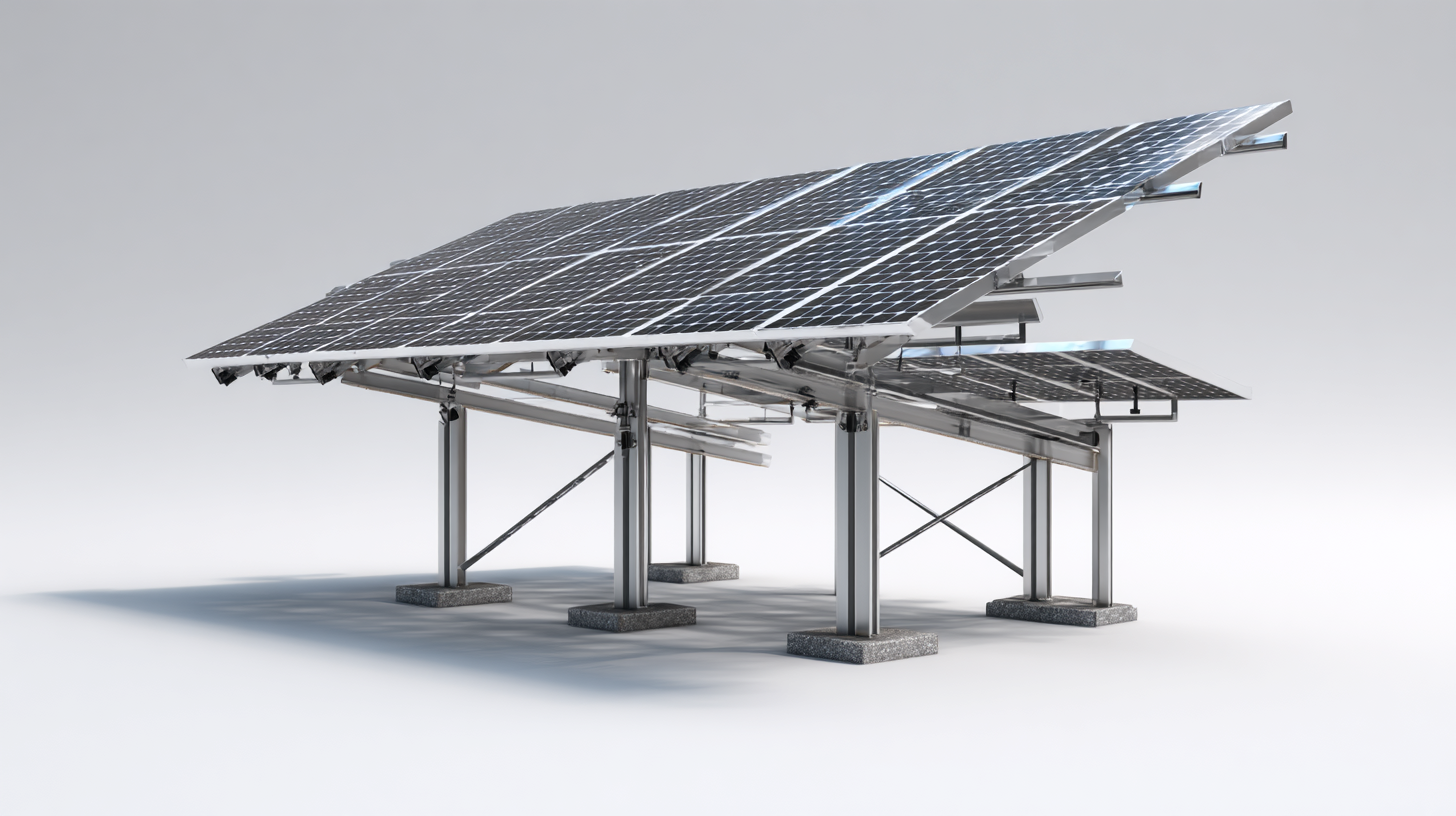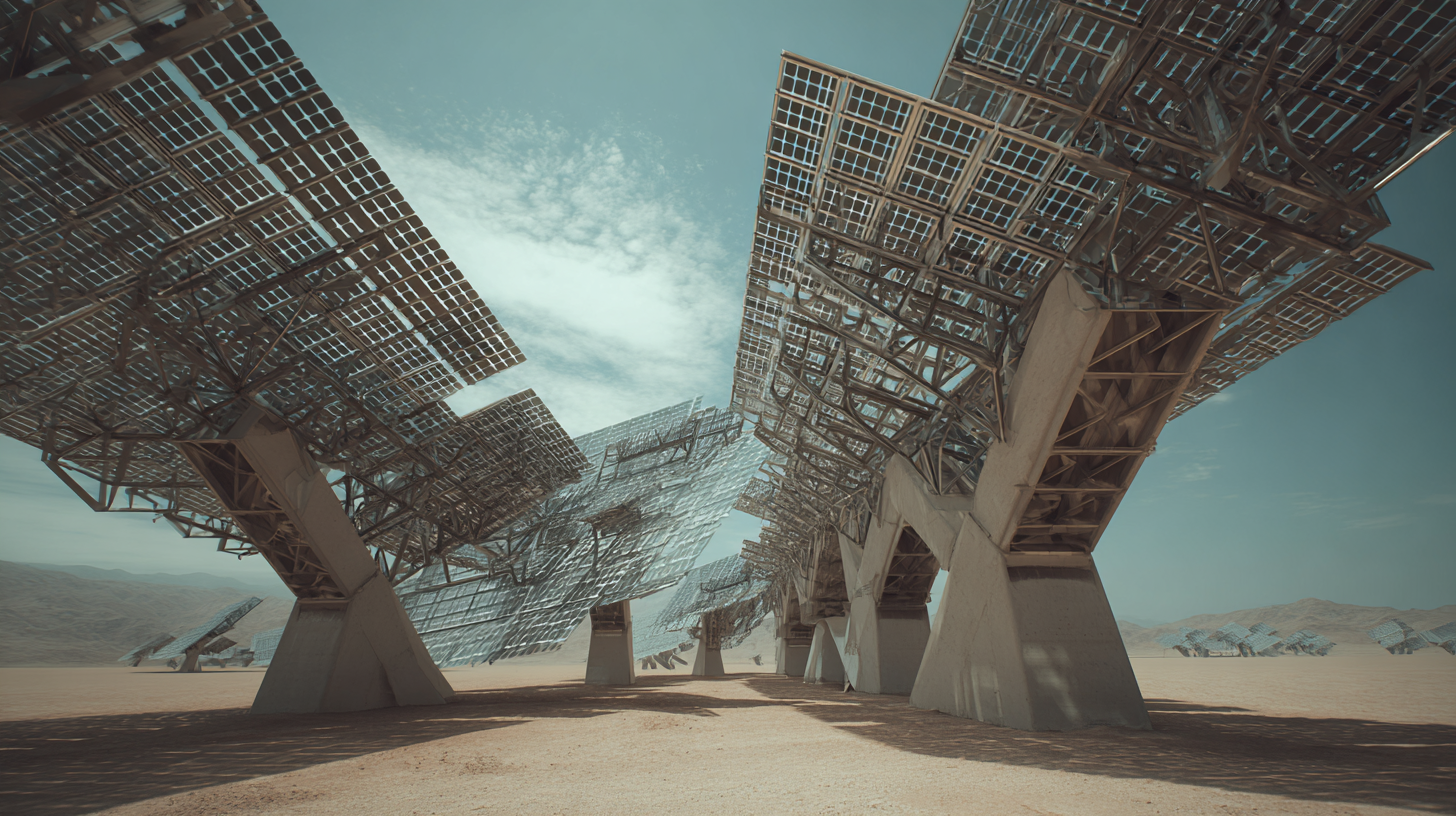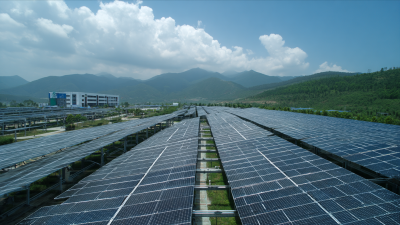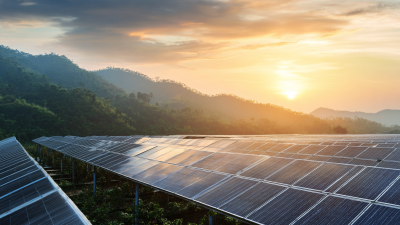
Blog
Understanding Solar Structures: The Backbone of Efficient Renewable Energy Systems
In the rapidly evolving landscape of renewable energy, solar structures play a pivotal role in harnessing the sun's power effectively. Understanding the nuances of these structures is essential for optimizing energy efficiency and enhancing the sustainability of solar systems. As we delve into the intricacies of solar structures, we will explore their design, material selection, and installation techniques that significantly impact performance.

This article aims to provide insightful tips on maximizing the potential of solar structures, ensuring that users can make informed decisions that lead to a greener future. By mastering the elements that constitute effective solar infrastructure, stakeholders can not only boost energy production but also contribute to the broader goal of transitioning towards sustainable energy solutions.
Join us as we uncover the backbone of efficient renewable energy systems.
The Role of Solar Structures in Enhancing Renewable Energy Efficiency
Solar structures play a vital role in maximizing the efficiency of renewable energy systems, particularly in harnessing solar power. These structures, which include solar panels, mounting systems, and tracking systems, are designed not only to capture sunlight effectively but also to optimize energy output throughout the day. By strategically positioning solar panels on rooftops or flat terrains, and utilizing advanced tracking mechanisms that follow the sun's path, the amount of solar energy captured can significantly increase, leading to higher overall energy production.
Moreover, the design and integration of solar structures are essential for minimizing land use and reducing installation costs. Innovative designs, such as building-integrated photovoltaics (BIPV), allow solar panels to be incorporated directly into the architecture of buildings. This not only saves space but also enhances the aesthetic value of structures while generating renewable energy on-site. As renewable energy systems continue to evolve, understanding and investing in efficient solar structures will be key to achieving a sustainable energy future.
Key Design Principles for Solar Support Systems in Energy Production
Key design principles for solar support systems are essential to optimizing energy production and ensuring the longevity of solar installations. According to the National Renewable Energy Laboratory (NREL), effective design can increase energy output by up to 15%. One vital principle is the orientation of solar panels. By adjusting panels to face the optimal angle towards the sun, systems can harness maximum sunlight throughout the day. For instance, a tilt of 30 degrees is often recommended for mid-latitude locations to strike a balance between seasonal sun exposure.
Structural integrity is equally crucial. A robust support system must account for local environmental factors such as wind loads and snow accumulation. The Solar Energy Industries Association (SEIA) reports that using materials that can withstand local weather conditions increases the lifespan of installations significantly. Furthermore, modular designs allow for scalability and easier maintenance, ensuring that systems can adapt to changing energy demands while maintaining efficiency. Emphasizing these design principles in the planning phase can lead to higher energy yields and reduced operational costs, making solar energy a more viable alternative in the transition to renewable energy systems.
Material Selection and Sustainability in Solar Structure Engineering
The choice of materials in solar structure engineering is crucial not only for the longevity and efficiency of solar installations but also for promoting sustainability within the industry. According to a 2021 report by the International Renewable Energy Agency (IRENA), the selection of high-quality, environmentally friendly materials can improve the performance of solar modules by up to 15%. This not only increases energy output but also reduces the need for frequent replacements, thus minimizing waste in the long run.

Sustainable materials such as recycled aluminum and innovative composites are becoming increasingly popular. A study from the National Renewable Energy Laboratory (NREL) highlights that utilizing recycled aluminum can save up to 95% of the energy required compared to producing new aluminum. Additionally, advancements in materials science have led to the development of bifacial solar panels, which can harness sunlight from both sides, making them an efficient option that promotes resource conservation. Overall, making informed material selections in solar structure engineering is essential for bolstering the sustainability of renewable energy systems and minimizing their environmental footprint.
Comparative Analysis of Fixed vs. Tracking Solar Structures on Performance
The comparative analysis of fixed versus tracking solar structures highlights significant differences in performance, especially under semi-arid climate conditions such as those found in Pakistan. In this context, a 2.160-kW single-axis PV system was designed to optimize energy efficiency through an advanced mechanical structure. The research emphasizes that by incorporating tracking technology, solar panels can maintain optimal alignment with the sun, thereby enhancing energy capture throughout the day compared to their fixed counterparts.
Numerical modeling and neural network optimization play a crucial role in improving solar panel performance. Utilizing a hybrid approach that combines physics-informed neural networks with reinforcement learning allows for real-time adjustments, maximizing energy output. This method is particularly beneficial in environments where weather conditions fluctuate, as it adapts the solar panels to changing sunlight conditions effectively. In summary, the ongoing advancements in solar tracking technologies and AI-driven optimizations demonstrate a promising path towards enhancing renewable energy systems, making them more efficient and sustainable in diverse climatic scenarios.
Future Trends and Innovations in Solar Structural Engineering and Design
As the global demand for renewable energy continues to surge, solar energy stands out as a leading solution for sustainable energy production. Innovations in solar structural engineering and design are crucial for maximizing energy efficiency and ensuring longevity in these systems. Notably, the perovskite solar cell market is expected to witness exponential growth, with projections estimating its market size to reach billions by 2032. This surge is driven by the unique crystalline structures of perovskite materials, which have demonstrated efficiencies of over 25%, significantly surpassing traditional silicon-based cells.
The advancements in solar evaporation technology, as examined by recent researchers, reflect the potential of harnessing solar energy not just for electricity generation but also for water desalination and purification. This multifaceted approach can address dual concerns of energy and fresh water scarcity. Furthermore, industry leaders emphasize the necessity of staying ahead through technological innovation, ensuring that product performance and cost-effectiveness align with the evolving market demands. With a focus on creating robust solar structures, future trends aim to integrate smarter designs and more sustainable materials, paving the way for enhanced efficiency in renewable energy systems.

Related Posts
-

Achieving Export Certification for the Best Solar Structures: A Step-by-Step Guide
-

Solar Structure Comparison: Analyzing Efficiency and Cost-Effectiveness Based on Industry Data
-

Understanding the Advantages of Best Solar Structure Solutions
-

Uncover the Excellence of Best Solar Engineering from Chinas Leading Manufacturers
-

Setting Industry Standards for the Best Solar Energy Solutions: A Path to Sustainability
-

Ultimate Guide to Choosing the Best Solar Power Solutions for Your Business Growth